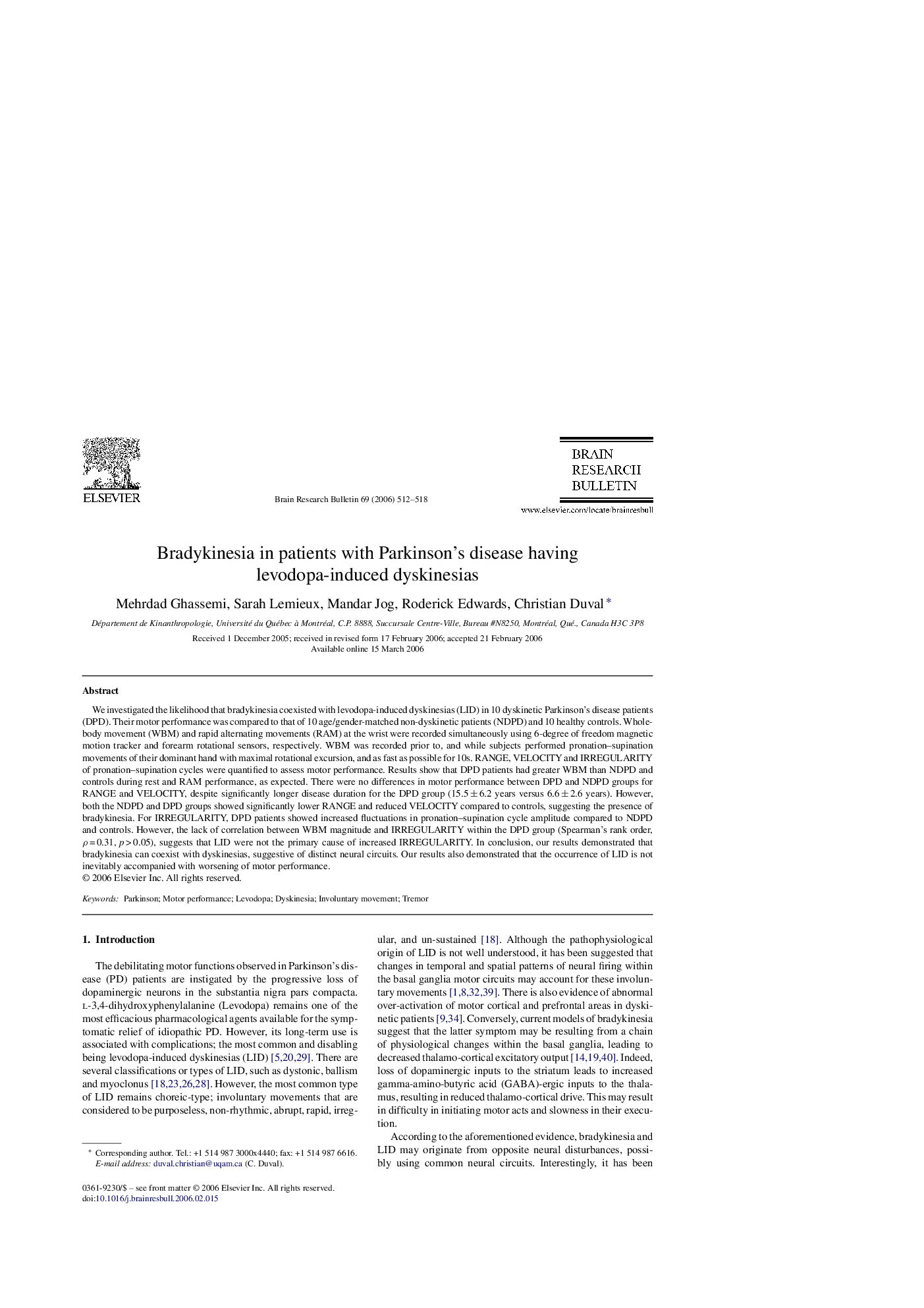| کد مقاله | کد نشریه | سال انتشار | مقاله انگلیسی | نسخه تمام متن |
|---|---|---|---|---|
| 4320279 | 1290857 | 2006 | 7 صفحه PDF | دانلود رایگان |

We investigated the likelihood that bradykinesia coexisted with levodopa-induced dyskinesias (LID) in 10 dyskinetic Parkinson's disease patients (DPD). Their motor performance was compared to that of 10 age/gender-matched non-dyskinetic patients (NDPD) and 10 healthy controls. Whole-body movement (WBM) and rapid alternating movements (RAM) at the wrist were recorded simultaneously using 6-degree of freedom magnetic motion tracker and forearm rotational sensors, respectively. WBM was recorded prior to, and while subjects performed pronation–supination movements of their dominant hand with maximal rotational excursion, and as fast as possible for 10s. RANGE, VELOCITY and IRREGULARITY of pronation–supination cycles were quantified to assess motor performance. Results show that DPD patients had greater WBM than NDPD and controls during rest and RAM performance, as expected. There were no differences in motor performance between DPD and NDPD groups for RANGE and VELOCITY, despite significantly longer disease duration for the DPD group (15.5 ± 6.2 years versus 6.6 ± 2.6 years). However, both the NDPD and DPD groups showed significantly lower RANGE and reduced VELOCITY compared to controls, suggesting the presence of bradykinesia. For IRREGULARITY, DPD patients showed increased fluctuations in pronation–supination cycle amplitude compared to NDPD and controls. However, the lack of correlation between WBM magnitude and IRREGULARITY within the DPD group (Spearman's rank order, ρ = 0.31, p > 0.05), suggests that LID were not the primary cause of increased IRREGULARITY. In conclusion, our results demonstrated that bradykinesia can coexist with dyskinesias, suggestive of distinct neural circuits. Our results also demonstrated that the occurrence of LID is not inevitably accompanied with worsening of motor performance.
Journal: Brain Research Bulletin - Volume 69, Issue 5, 15 May 2006, Pages 512–518